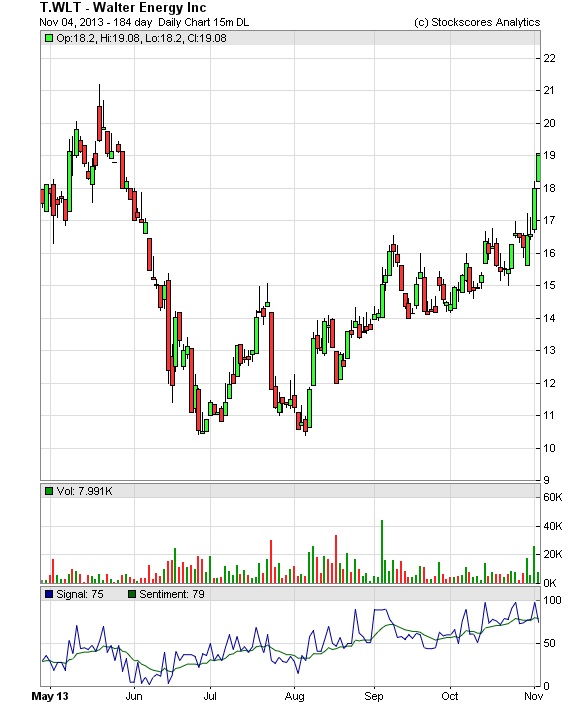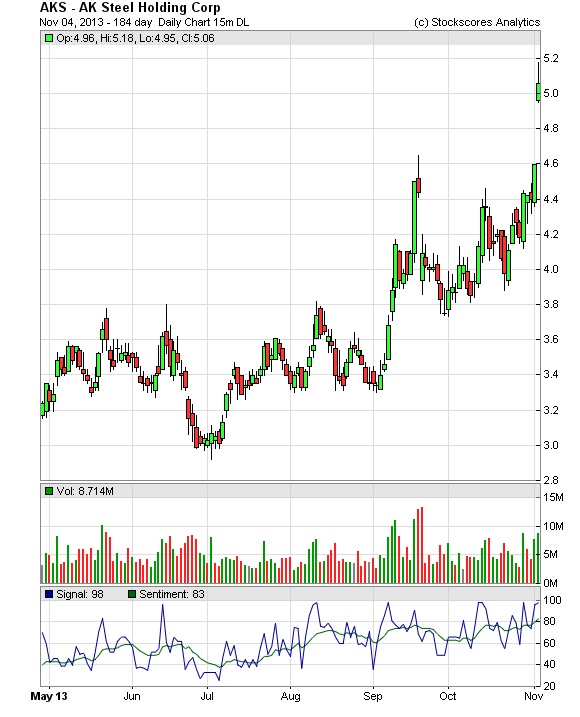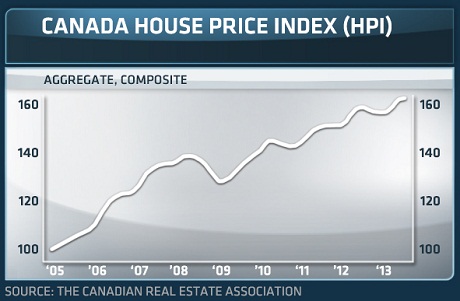Personal Finance
 The Greatest Trader Who Ever Lived
The Greatest Trader Who Ever Lived
Ed Note: This man’s life story makes great reading for anyone near the markets whether a trader or an investor.
When Jesse Livermore made his first stock trade at the tender age of 15, he didn’t hedge his bets. He consulted the charts he’d compiled working as a chalkboard runner in a Boston brokerage firm, and when the figures for the company in question, Burlington, checked out, he went all in, investing everything he had—all $5—in the railroad. Two days later, he cashed in his shares, for a profit of $3.12.
It was 1892.
Exhilarating, that first taste. The pendulum had begun to swing.
Livermore began to roam the streets of Beantown, frequenting its bucket shops, gambling counters that took bets on stocks without executing actual trades. His ability to recognize patterns in the ticker tape stood him in good stead. In six months, he’d accumulated $1,000. Five years later, it was $10,000—enough to make him persona non grata to every pseudo-broker in the city.
So he moved to New York and graduated to trading with real Wall Street firms. Something, however, was wrong. His system wasn’t delivering as expected. He watched his stake drop, first to $2,500, then to zero. At an age when most contemporary youth were still preoccupied with fraternity smokers and petting, the “Boy Plunger” (turn-of-the-century slang for “reckless gambler”) had already gone through a full cycle of boom and bust.
Livermore decided the problem lay in the lag time between the stock order and the execution of the purchase itself. So he borrowed $500 against future gains. The pendulum began to swing wider. Quickly making back what he’d lost, he increased his stash further, to $50,000. Then, on May 9, 1901, he lost it all, every penny, largely due to the frenzied pace of the day’s trading.
Again he hit the bucket shops, again accumulating a stake that allowed him to get back into the game. He returned to New York with what he termed a “fair-sized roll.” Then, on April 16, 1906, he was hit by a premonition. With no warning, he yielded to a strange urge to sell short a thousand shares of Union Pacific railroad—an urge even he admitted he didn’t understand. Two days later, the San Francisco Earthquake hit. Union Pacific was decimated; he’d made $250,000 literally overnight.
…read more HERE
How to Find and Profit from Hot Stocks
Position traders are those who hold stocks for weeks or months. Swing traders hold for days or may be a couple of weeks. Day traders are in and out within a day. No matter what style of trading you do or want to do, the simple concepts of the Stockscores Approach to trading can give you an edge. Attend one of these upcoming Stockscores presentations and learn:
– the essentials of stock analysis which will allow you to analyze any stock in seconds
– the simple rules of risk management that will help you avoid big losses
– how to use powerful tools to find hot stocks in minutes
With the sponsorship of Disnat, these presentations are free to attend. Each lasts 90 minutes and attendees may be eligible to receive some valuable services for free. Join us:
Calgary November 12th and 13th
Vancouver November 14th
Surrey November 16th
Online Webinar – to be announced soon
WEEKLY COMMENTARY
Stockscores Market Minutes Video
To trade or invest successfully, you must take your emotions out of the trading decision. This week’s Market Minutes video discusses some ways to do this plus provides Tyler’s weekly market analysis. Watch the video on Youtube by clicking here.
How to Sleep Well and Trade Better
Emotion is the enemy of every trader.
Our emotional attachment to money is what causes us to lose our discipline, to take big losses, to not let our strong and profitable trades run higher. It causes us to own too many stocks in one sector or fall in love with a stock that will only hurt us. Letting emotion in to our trading decisions is a fast way to insomnia.
The volatility of the past 5 years and the relative underperformance of the stock market over the last 13 years has caused many investors to simply abandon the stock market. In doing so, they have been left out of one of the strongest Bull markets in history. Not for rational reasons but because of the fear of losing has been too strong.
The perception is that the stock market is too risky, many investors don’t like the potential for a sharp sell off that can destroy their portfolio in a very short time period. The collapse of the stock market in 2008 has given many a form of post-traumatic stress disorder, leaving them on the sidelines when it has not made sense to do so.
The stock market may be volatile at times but that is not what determines risk. Risk is how you respond to the volatility, how you manage the potential size of your losses. The stock market is not risky, the people that play it are. It is how you deal with price volatility that determines risk.
If you want to sleep well while invested in stocks, you need to have a plan for managing risk. The notion that you can buy some “good” companies and forget about them is outdated and reckless.
Here are my essentials to being invested in the stocks and sleeping well:
- Plan to lose. When you buy a stock, know the price level where the stock market will have proven you wrong. Learn how to determine where a stock’s support price is and if the stock closes below that level, realize that the market is telling you that something is probably wrong at the company. Get out.
- Know your tolerance for risk. How much are you willing to lose on any one stock trade? If you risk more than this amount, you will get emotional. Take the difference between the entry price and the stop loss price and divide that in to your risk tolerance to determine how many shares to buy. If you are buying a stock at $10 with a stop loss point at $9 and you are willing to lose $500 on any one trade then you should buy 500 shares.
- Don’t obsess. You don’t need to watch your stocks constantly, if you are position trading then only look at the once a day or even once a week. You only need to check to see if your stock has given an exit signal, obsessing over every gyration will make you emotional and lead you to make mistakes.
- Have a written plan. You must write down your trading rules. When will you buy, when will you sell, how will you manage risk and how will you review your positions. Keep the plan simple but concise enough that there is no room for interpretation.
- Stick to your plan. Your plan should be based on strategies that you have tested and believe in. Deviating from the plan means you are going in to areas that have not been tested and that puts you closer to being a gambler. Gambling traders may win in the short term but in the long term they lose.
- Remember that trading stocks is as risky as you make it. Not having a plan with rules for limiting the size of your losses leaves you exposed to big losses if the market corrects sharply. With loss limits and discipline, you should never be the victim of a major market correction.
STRATEGY OF THE WEEK
This week, I applied the Stockscores Simple market scan, using a minimum number of trades of 200 for the Canadian Exchanges and 1000 for the US Exchanges. This scan looks for stocks that have a Sentiment Stockscore of at least 60 and a Signal Stockscore of 80 or higher and is a preset scan available to Advanced or Pro members of Stockscores. Many of the stocks that are found by this scan are well in to their upward trends already – good holds but too late to buy. I inspect the charts in search of stocks that are breaking from good long term chart patterns. Here are two standouts from this week’s trading.
STOCKS THAT MEET THAT FEATURED STRATEGY
1. T.WLT
T.WLT (WLT) had a strong day on Friday, trading higher than average volume as it broke through resistance at $16.50. This stock has gained 18% since it was featured in the Tradescores daily newsletter two months ago but appears to have more upside from here. Support at $14.90.

2. AKS
AKS is another recently featured stock from the Tradescores Alerts and Analysis newsletter, it broke higher last week as investors are starting to want to own stocks that benefit from a global economic turnaround. The stock is now up 14% in 35 days and looks like it is in the early stages of a long term trend reversal. (note, these remarks were prepared on the weekend, AKS received an upgrade from Goldman Sachs Monday morning and is now up another 12%)

- References
- Get the Stockscore on any of over 20,000 North American stocks.
- Background on the theories used by Stockscores.
- Strategies that can help you find new opportunities.
- Scan the market using extensive filter criteria.
- Build a portfolio of stocks and view a slide show of their charts.
- See which sectors are leading the market, and their components.
Disclaimer
This is not an investment advisory, and should not be used to make investment decisions. Information in Stockscores Perspectives is often opinionated and should be considered for information purposes only. No stock exchange anywhere has approved or disapproved of the information contained herein. There is no express or implied solicitation to buy or sell securities. The writers and editors of Perspectives may have positions in the stocks discussed above and may trade in the stocks mentioned. Don’t consider buying or selling any stock without conducting your own due diligence.
 Want to read 14 famous business books in under a minute?
Want to read 14 famous business books in under a minute?
To save you some time and money, we’ve made it possible. We boiled down some of the most popular and influential business books out there to their central lessons.
For those looking to bone up on some business theory, here are the highlights.
Goldman Sachs Warns – ‘large correction’ in Canada housing
Canada is careering towards a sharp fall in house prices with some areas of the country’s market already showing signs that overbuilding and ultralow interest rates are taking their toll on the property market, Goldman Sachs reports.
Adding its voice to a growing chorus of concern, a report from Hui Shan, an economist at Goldman, late last week warned: “what goes up can keep going up, but then tends to come down.”
Ranking high-growth property markets in the last four years, Canada comes fourth behind Israel, Norway and Switzerland, according to her research. But unlike some other markets, construction activity has been trending up for years and has not shown signs of slowing down in Canada, she explained.
(Read More: Canada’s red hot housing market teeters on the brink)
“If the elevated level of homebuilding persists in coming years, the risk of overbuilding will increase substantially. And if the ongoing housing boom is followed by a housing bust, the price decline can be quite significant given the excess supply of housing at that point,” she said.
Housing starts in Canada have shown recent gains, trending at 190,492 units in September compared to 188,440 in August, according to Canada Mortgage and Housing Corporation (CMHC). House prices, meanwhile, continue to defy the odds, with the national average sale price rising 8.8 percent on a year-over-year basis in September, according to the Canadian Real Estate Association (CREA).
Sales activity continues to remain strong with national home sales ticking higher by 0.8 percent from August to September, CREA have said, roughly in line with a 10-year average. Inventory figures also remain stable, according to the CREA, currently standing at 5.8 months – meaning it would take that amount of time to completely liquidate current inventories at the current rate of sales activity. Both datasets indicate that demand is still prevalent to some degree.

(Read More: Fitch rings warning bell on Canadian banks)
Meanwhile, Stephen Poloz, the governor of the Bank of Canada maintains that he remains vigilant on any heat in the property market. Renewed momentum in the housing market points to a return of risk,he said in a monetary inflation report last Wednesday, despite some confidence that households were reducing their debts.
The Goldman Sachs report forecast that, in the short term, house prices may continue to increase before any “large correction”, however Sebastien Galy, senior currency strategist at SocGen told CNBC that some data suggests that small pockets of the market could already be seeing that downward pressure.
In particular its figures from Montreal Island in Quebec, which is supposed be the “most solid” higher income market, according to Galy. The median price of single-family homes has dropped 7 percent (year-on-year), according to the Greater Montreal Real Estate Board. Condominiums have seen a 5 percent fall.
(Read More: Where’s the next property bubble building?)
The market has also been complicated by easy monetary policies around the globe, Shan said. Central banks in the U.S., Japan and the U.K. have all embarked onquantitative easing (QE) programs which have pushed interest rates to record lows.
Shan believes the country has inadvertently imported this policy. “Lower interest rates reduce the funding costs for purchasing homes and shift the buy versus rent decision in favor of buying,” she said.
CNBC.com’s Matt Clinch. Follow him on Twitter
@mattclinch81
I was in Southern California for the last couple of days and got to see how the economy was doing on the ground. Although consumers are not overly confident with respect to the economy, they do seem to be spending in the region (this contrasts with the rest of the U.S. where retail spending has been weaker than expected). So, why are we seeing sustained consumer activity in Southern California? It might be because of the “wealth effect” and how it pertains to housing.
Southern California has recently seen a spike in housing prices. Just a quick look at www.zillow.com will confirm this. The Fed’s Quantitative Easing policy of money-printing appears to have gained traction by injecting more optimism into the region’s housing market. It should also be noted that Southern California was hit harder than a lot of other areas, such as the U.S. Pacific Northwest, during the collapse of the subprime housing bubble. As a result, it was starting from a lower base and more likely to add QE-inspired gains.
However, much of the revival in Southern California housing prices is sugar-coated by perception. As the first graph above illustrates, the move up in prices since 2009 has been impressive. Buying a house as an investment doesn’t look all that risky. And, with all the emotional enticements of real estate, potential buyers are not inclined to broaden their historical perspective (unless they were hurt by real estate during the crash). If we look at the second graph, the last 13 years of house prices in the region tell a different story. We are still 25% below the 2006 peak and only back to mid-2004 prices. That’s over nine-years of going nowhere while paying Southern California’s famously high property taxes all the way along!
The region is going to need substantially improved economic growth and employment growth in order to sustain recent gains. Without that, all eyes will eventually focus on where these gains came from: Quantitative Easing. And, to the chagrin of the Fed, those eyes will constantly be handicapping the eventual end of Quantitative Easing and begin to make investment/spending/home-buying decisions long before that.
The opinions expressed in this report are the opinions of the author and readers should not assume they reflect the opinions or recommendations of Richardson GMP Limited or its affiliates. Assumptions, opinions and estimates constitute the author’s judgment as of the date of this material and are subject to change without notice. We do not warrant the completeness or accuracy of this material, and it should not be relied upon as such. Before acting on any recommendation, you should consider whether it is suitable for your particular circumstances and, if necessary, seek professional advice. Past performance is not indicative of future results.
Richardson GMP Limited, Member Canadian Investor Protection Fund.
Richardson is a trade-mark of James Richardson & Sons, Limited. GMP is a registered trade-mark of GMP Securities L.P. Both used under license by Richardson GMP Limited.













